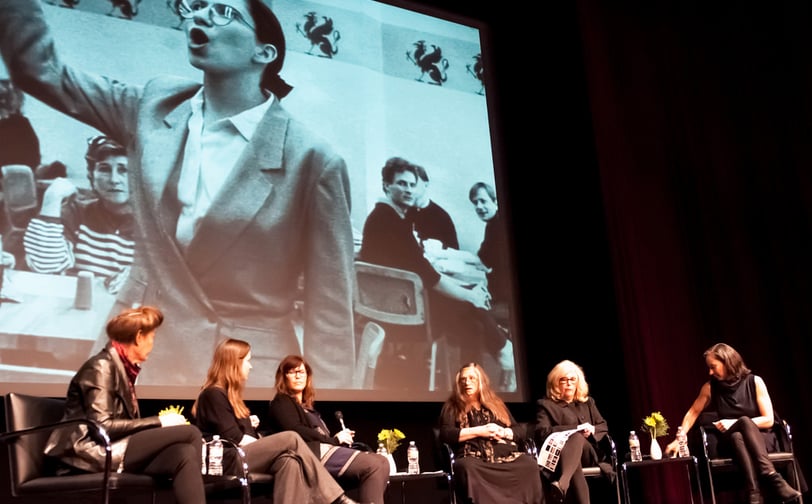The Future of Institutional Critique
3/6/2014


As a part of the Hammer Museum’s ongoing exhibition Take It or Leave It: Institution, Image, Ideology, prominent artists Judith Barry, Dara Birnbaum, Andrea Fraser, and Mary Kelly were called together on February 12 to discuss the panel’s namesake: “The Future of Institutional Critique.”
It was a conversation so multifaceted that the perspective of a singular listener would fail to convey the nuances and affect of each speaker invited. In hopes of replicating the multiplicity and subjectivity invoked (and evoked) by the artists featured in Take It or Leave It, GRAPHITE has decided to cull testimonials from Hammer Student Association members who attended that evening:
“The emphasis on temporality was very striking: not only how time functions to activate or denude the power of institutional critique, but also how interwoven history is in the artists’ practices. (Also, I loved Dara Birnbaum’s pessimism. She is so brilliant, moral, and strong.)” – Zoe Silverman
“I can understand the so called ‘pessimism’ attached to the historicization of the ‘institutional critique genre’ of visual arts, but I refuse to believe that it only exists in the past or that it has lost its potency as an impactful modus operandi. It is our responsibility (as another generation) to reassess the institutions that support and bind us and to re-envision the future of institutional critique by terms which have yet to be solidified.” – Hana Cohn
“An incredible panel affirming (for me) once again of the power of critique to provoke and provide a deeper understanding of an institution. Since the panel I’ve been thinking a lot about what Dara Birnbaum said about how changing policies around privacy (‘permission to use’) require a different approach to commenting on pop culture.” – Sonja Bartlett
“Although the stated topic for discussion, The Future of Institutional Critique, was ironic–posed to a panel of veteran artists lauded by the very institutions they once criticized–Kelly, Birnbaum, Barry and Fraser spoke mostly about their influences and how they developed critical or site-specific practices. Those influences reflected the trends in 1970s-’80s critical theory–the artists cited psychoanalysis, poststructuralism, feminist theory, as well as the work of Louis Althusser and Michel Foucault. What really struck me, though, was an interchange between Andrea Fraser and Mary Kelly. Kelly observed that Fraser’s practice, while younger than her own work and heavily inspired by it, was the most “direct, incisive” critique. Fraser came to performance as a medium, she said, by realizing that only in occupying an institutional position of power could one begin to understand the socio-psychic formations which underlie that position, and thus effectively critique them. I thought immediately of Stanislavki, whose revolutionary “method acting” technique advocates that one become the character one is playing. If Fraser so effectively plays an institutional figure, like her tour-guide altar ego Jane Castleton, has she become one herself? How can artists (or anyone for that matter) negotiate between shifting identities authentic and artificial?” – Evan Moffitt
“It was an incredibly enchanting to see Mary Kelly, Judith Barry, Dara Birnbaum, and Andrea Fraser all on one panel together, but it didn’t seem like their conversations were as extreme as I hoped they would be. The future of one of art’s most controversial and exciting topics of the last few decades seems to rely on new artists to continue the practice as hope for its development was not optimistic from the panel. It was a really nice thing to hear all of them discuss their practice and I’m grateful for the potential once-in-a-lifetime chance to see them all together in person, but I would recommend that experiencing the pieces that they contributed to Take It or Leave It: Institution, Image, Ideology at the Hammer Museum is another great way to see them all together in a more insightful way.” – Gabe Garza
“I was most struck by a comment made by an audience member, who said that ‘art was made as an answer or in response to questions arising from a specific historical context, but as time passes, the questions which we approach the work change while the work, by its physical nature, continues to have the same ‘answer.” – Iris Colburn
Take It or Leave It: Institution, Image, Ideology will remain open at the Hammer Museum until May 18, 2014.
